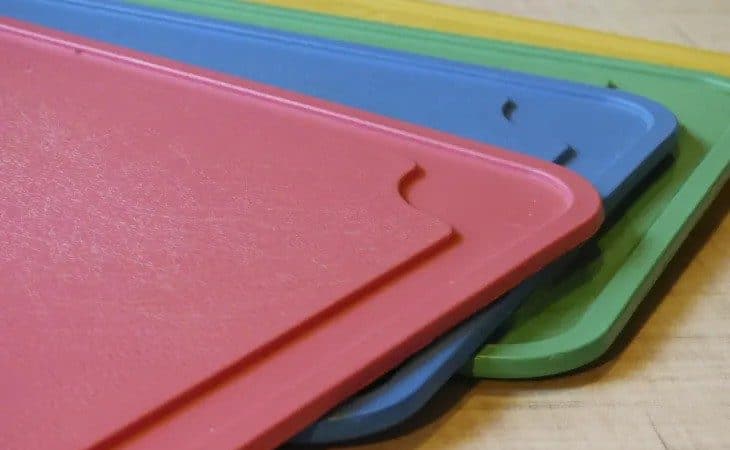
A few months ago, a disturbing study about plastic cutting boards was published. The focus was on how much microplastic gets into food every time one uses these boards. The study concluded that an average of 50 grams of microplastic is released from a cutting board over a year, equivalent to 10 plastic credit cards; about 15 milligrams are released with each use.
Real-Time Demonstration
Recently, Dr. Paul Saladino posted a video on Instagram showing this in real-time. Using a sharp kitchen knife, he cut on the board and then scraped the released plastic onto a dark plate, making the invisible visible.
Expert Opinions
Toxicologists might argue that this isn’t yet a cause for concern, given the amount of microplastic already present in our food and water. However, studies on the health impacts of microplastic consumption are still in their early stages, and we don’t yet know its full effects.
Alternatives to Plastic Cutting Boards
To avoid plastic cutting boards, you can opt for wooden or bamboo cutting boards. Wooden boards are porous, which can lead to foodborne illnesses if not properly cleaned. Bamboo boards are less porous but can also harbor bacteria if not maintained correctly.
Keeping Wooden Cutting Boards Clean
Dr. Saladino suggests a solution to keep wooden boards clean and to ditch plastic ones forever:
- Seal the wood: Use tallow (from beef fat, similar to lard) to seal the wood before each use.
- Clean with vinegar: After use, wipe the board with vinegar (e.g., distilled white vinegar or apple cider vinegar) to naturally kill bacteria without chemical products. You can also scrub it with lemon and salt.
Maintenance Tips
To keep your cutting board looking good and prevent it from drying out, oil it regularly. This helps maintain its pristine condition and prevents warping and cracking.
Switching from plastic to wooden or bamboo cutting boards can help reduce your exposure to microplastics. By following proper cleaning and maintenance tips, you can ensure a safer and more sustainable kitchen environment.

